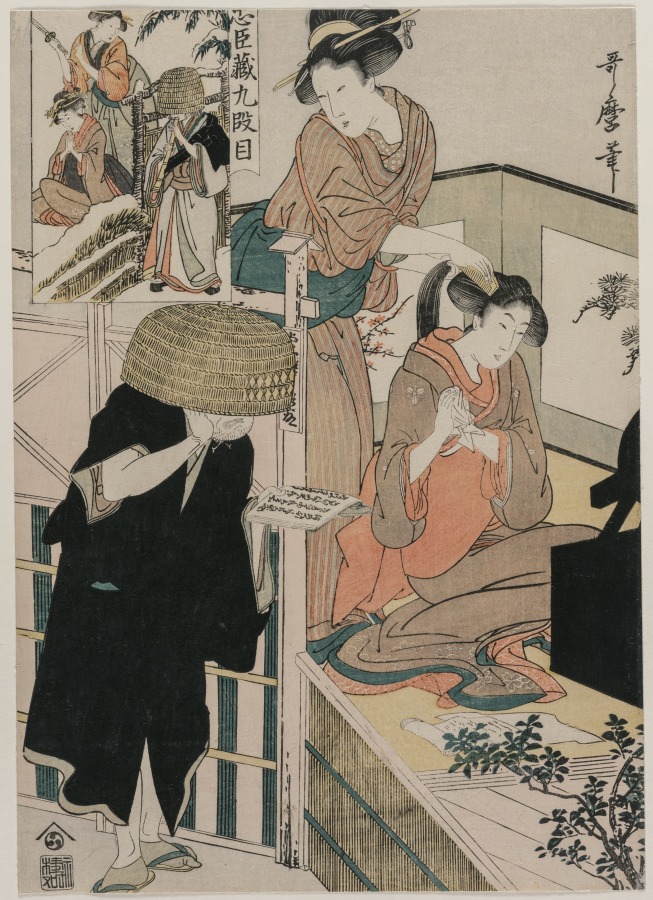| schema:description 10 | "type: Print" |
| schema:description | "creditline: Gift from J. H. Wade" |
| schema:description | "id: 103288" |
| schema:description | "inscription: Signature: Utamaro hitsu
Publisher: Nishimuraya Yohachi (Eiju han, emblem)" |
| schema:description | "tombstone: Chushingura: Act IX of The Storehouse of Loyalty, late 1790s. Kitagawa Utamaro (Japanese, 1753?-1806). Color woodblock print; sheet: 36.6 x 26.1 cm (14 7/16 x 10 1/4 in.). The Cleveland Museum of Art, Gift from J. H. Wade 1921.357...(more)" |
| schema:description | "technique: color woodblock print" |
| schema:description | "measurements: Sheet: 36.6 x 26.1 cm (14 7/16 x 10 1/4 in.)" |
| schema:description | "culture: Japan, Edo Period (1615-1868)" |
| schema:description | "collection: Japanese Art" |
| schema:description | "wall_description: Stage Version
In this dramatic scene depicted in Masayoshi’s stage version
(see Chushingura: Perspective Picture for the "Treasure House of
Loyalty" [1985.338.9]), Tonase prepares to kill her daughter
Tonami with her husband’s sword and then to commit
suicide. The dire moment results from the humiliating
rejection of her daughter’s marriage contract. Fortunately,
her husband, Honzo, dressed as an itinerant Buddhist priest,
appears just in time to stop the tragedy.
Parody Print
In the parody print, Utamaro turned this dramatic event
into a scene of domesticity in which the mother brushes her
daughter’s hair. An itinerant priest, wearing a deep-brimmed
basket hat, reads to them from the gate....(more)" |

